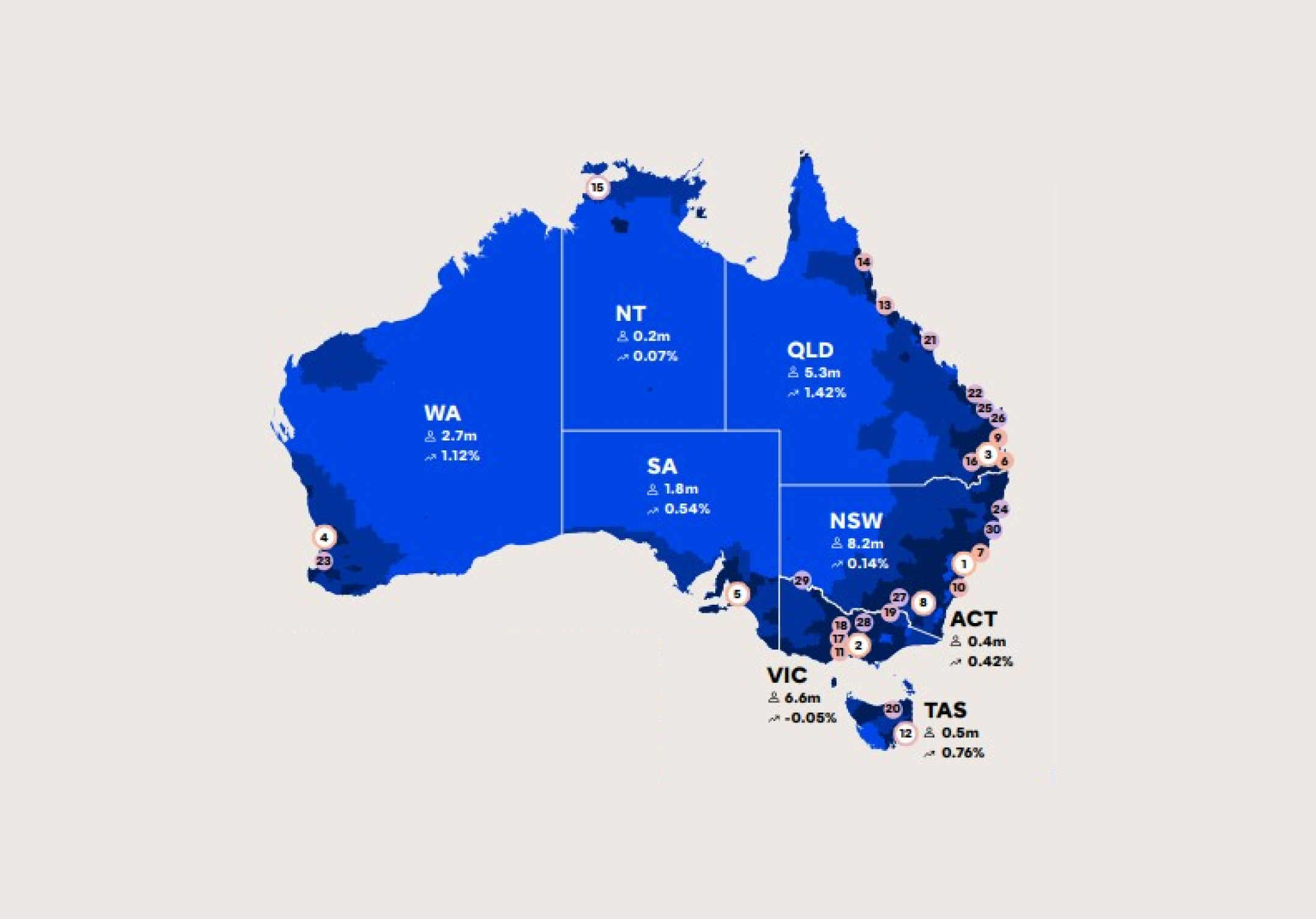Latest Census data: How Australians learn, work & commute


Today the Australian Bureau of Statistics has released their second round of data gathered in the 2016 Census. This data reveals a fascinating snapshot of how we work and are educated, with the number of Australians with a university degree up 6% in a decade, a higher proportion of Australians driving to work, and more of us working in part-time employment.
A more educated Australia
More than one in two Australians have undertaken further study since leaving school. The latest results show that 56% of Australians over the age of 15 (9.6 million people) currently hold a post-school qualification.
We are also more likely to have participated in higher education with close to one in four adult Australians now holding a Bachelor Degree or above (24%), up 6% from a decade ago. The rise in postgraduate learning has been even more marked, with an additional 300,000 Australians holding a postgraduate degree since 2011, an increase of 46%. Residents of Australia’s capital cities are almost twice as likely as those in regional areas to have a university qualification (30% compared to 16%). Australians with vocational qualifications (certificates III & IV) have seen increases (13%) at around half the rate of university degrees (23%)
The three most common qualifications, by field of study, are Management and Commerce, Engineering and Society and Culture. The popularity of Society and Culture (which includes areas such as politics, law and economics) has risen by 29% since 2011.
The highest growth has been in the traditional areas of study: Accounting (+64,189), General Nursing (+64,022) and Business management (+61,462). Aged care is growing too, now ranked as the fourth highest growth category increasing from 60,702 in 2011 to 97,024 today.
The gender gap
Over the last 50 years, women have massively increased their labour force participation while men have decreased theirs. In 1966 83% of men were employed compared to 34% of women. The latest Census results show that 65% of men are currently employed compared to 56% of women. Labour force participation for women peaks in the post-child rearing years among women aged between 45-49, with 76% employed in this age group. For men, participation peaks in the mid to late 30’s as does hours worked, averaging 42 hours per week until the late 50’s.
Women have been closing the post-school qualification gap with 54% of women compared to 58% of men holding a qualification. In 2006, 51% of males held a post-school education compared to 42% of women – a gap of 9%. Ten years later, this gap has narrowed to just 4%.
While women have increased their paid work participation and hours, men have not closed the gap in unpaid domestic work. Employed men were almost twice as likely to do less than 5 hours of unpaid domestic work per week (60%) as women (36%) and working women were more than three times as likely to be doing at least 15 hours of domestic work per week as men (27% compared to 8%).
One in five working males are tradies
More than one in five (22%) working males are tradesman or technicians with the three most popular male-dominated occupations being electricians, carpenters/joiners and truck drivers. For women, the top occupations are registered nurses, general clerks and receptionists.
The Census also revealed that the most popular occupation for both men and women is a general sales assistant although retail trade and wholesale trade are two of just three sectors that employ fewer workers today than in 2011. The biggest fall in employment by industry is manufacturing, which has seen the loss of 219,141 workers in 5 years.
Part-time employment and the gig economy
Over the past five years the Australian labour force population has grown by over 800,000 people, rising from 10,658,465 in 2011 to 11,471,298 in 2016. The gig economy is on the rise, with the number of Australians employed part-time having risen by 14% since 2011. The number of full-time workers, by comparison, has only risen by 4%. Today, one in three working Australians are employed part-time (up 3% since 2011). 25 years ago, just one in ten workers were employed part-time.
Australian’s working hard but trying to get a balance
Australians are most likely to work between 35-40 hours per week, with two in five (40%) working these hours. The Census revealed that some Australians may be developing a better work-life balance, with the percentage of Australians working more than 40 hours a week dropping from 29% in 2011, to 26% in 2016. Over the same period, the proportion of workers employed less than 25 hours per week increased slightly from 22% to 23%.
Getting to work
The proportion of workers driving to work has increased by 0.5% since 2011. Nearly seven in ten Australians (69%) drive themselves to work while an additional 5% ride along as passengers. Today an additional 466,885 are commuting by car compared to five year ago.
The goal of ‘walkable cities’ and ‘active transport’ needs further focus as the percentage of people walking to work declining from 4.2% in 2011 to 3.9% currently, and those using a bicycle to get to work also declined slightly from 1.2% to 1.1%.
Adelaide residents are the most likely to travel to work by car, with four in five (80%) travelling to work by car. Meanwhile, Hobart takes the prize for the most accessible city with 8% of workers walking their commute. Sydney, Australia’s most populous city, leads travel by public transport with nearly double the proportion of commuters travelling by train, bus, tram or ferry than any other capital city (Sydney 21%, Melbourne 13%, Brisbane 11%, Adelaide 8%, Perth 8%, Hobart 5%, Darwin 7% and Canberra 7%).




